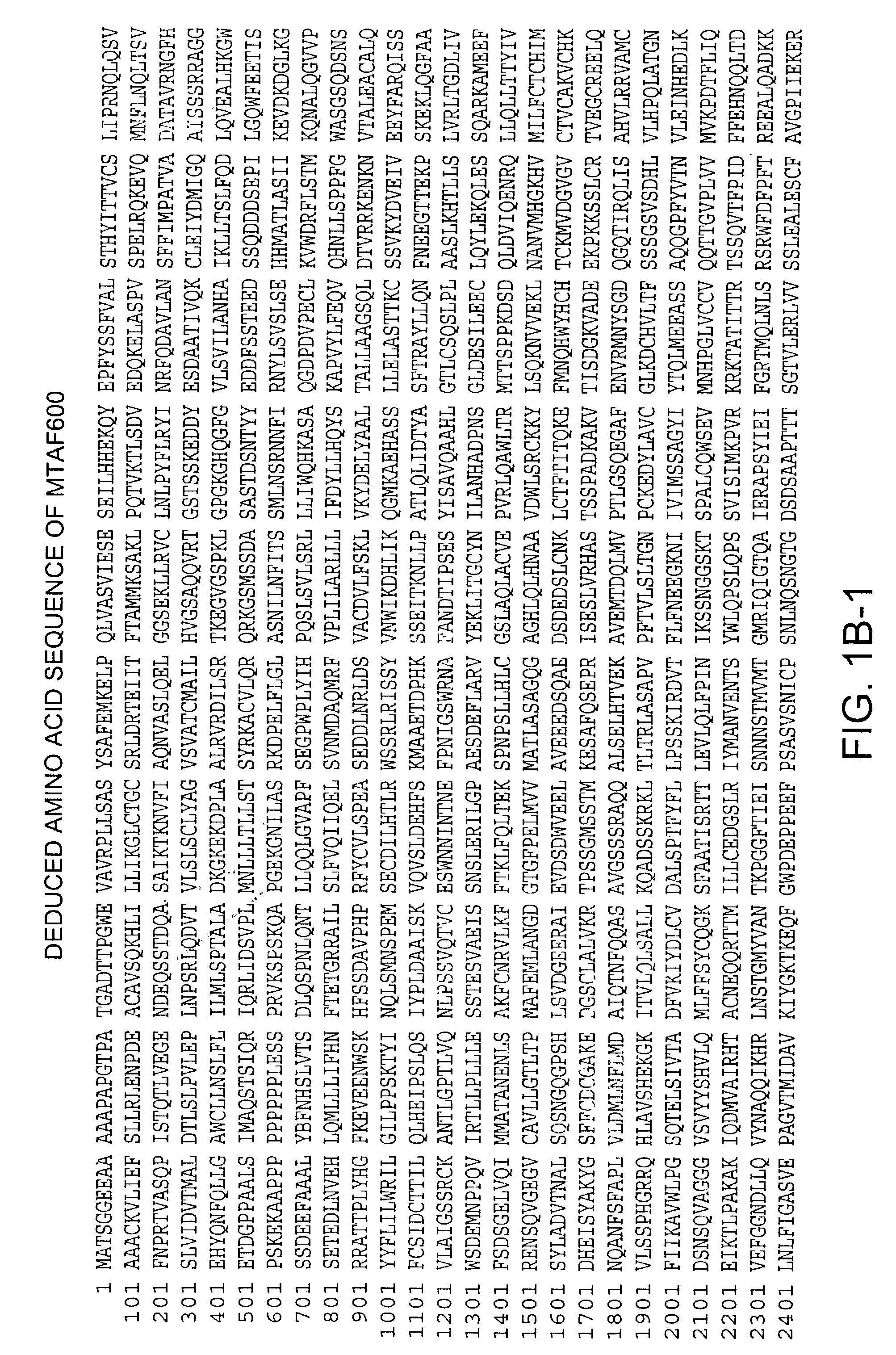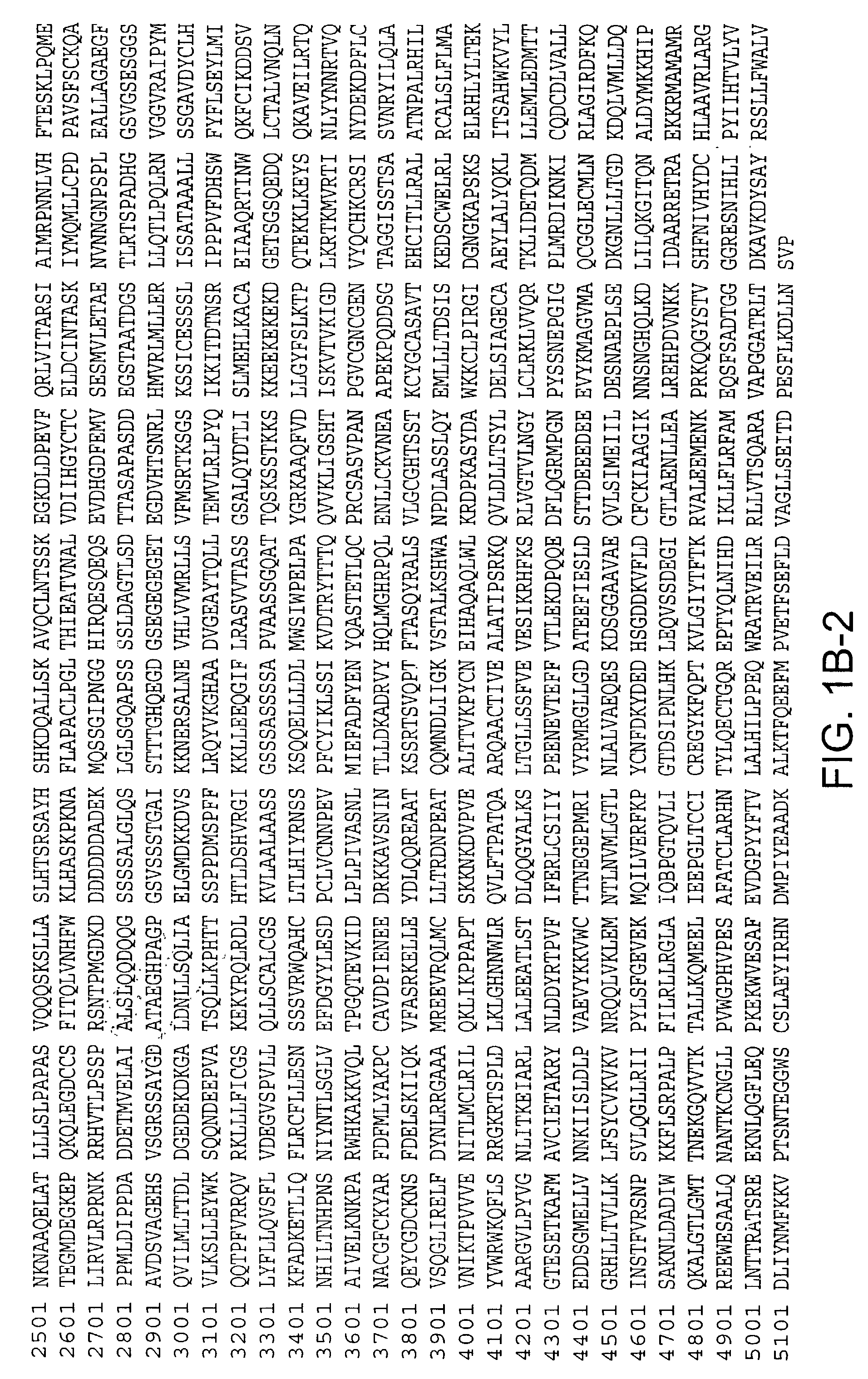Methods and compositions for modulating tumor suppression
a tumor and composition technology, applied in the field of methods and compositions for modulating tumor suppression, can solve problems such as loss of g1 control
- Summary
- Abstract
- Description
- Claims
- Application Information
AI Technical Summary
Problems solved by technology
Method used
Image
Examples
example 1
Purification and Characterization of the RB Complex
[0101] HeLa cells were transduced with a recombinant retrovirus expressing a bicistronic mRNA that encoded FLAG-epitope tagged RB at the N-terminus linked to the ILR2.alpha.-subunit surface marker, a construct that was driven by the internal ribosome entry site, and the transduced subpopulation was purified by repeated cycles of affinity cell sorting (Ogryzko et al Cell, Vol. 94, pp. 35-44, 1998). The RB complex was purified from nuclear extracts prepared from the resulting cells by immunoprecipitated with M2 anti-FLAG agarose as described (Ogryzko et al., Cell, Vol. 94, pp. 35-44, 1998). Specific protein bands were excised from Coomassie brilliant blue R250-stained SDS-PAGE gels, digested with trypsin in the presence of 50% [.sup.18O]-water to label the C-termini of the tryptic peptides, extracted and sequenced by tandem mass spectrometry (MS / MS) as described previously (Ogryzko et al., Cell, Vol. 94, pp. 35-44, 1998 and therein).
[...
example 2
Purification of the RB Complex
[0120] To purify RB we first established cells that stably express FLAG-epitope-tagged RB (f:RB). Although HPV-18 E7 expressed in HeLa cells is believed to inactivate RB family proteins, we risked employing HeLa cells for the following reasons: first, exogenous expression of RB in HeLa cells suppresses cell growth, indicating that RB is functional, at least in part, when exogenously expressed. Moreover, among different kinds of cells we have tested, we were only able to grow HeLa cells on a large scale when RB was exogenously expressed.
[0121] To establish HeLa cells expressing f:RB, we transduced recombinant retrovirus expressing a bicistronic mRNA that encoded f:RB linked to the ILR2 .alpha.-subunit surface marker (Ogryzko et al., Cell, Vol. 94, pp. 35-44, 1998) driven by the internal ribosome entry site. The transduced subpopulation was purified by repeated cycles of affinity cell sorting (Ogryzko et al., Cell, Vol. 94, pp. 35-44, 1998) with anti-ILR2...
example 3
Identification of the Novel RB-associated Factor MTAF600
[0123] Using an analysis of tryptic fragments of MTAF600 by tandem mass spectrometry (MS / MS), several EST clones that encode uncharacterized polypeptides were identified. A human liver cDNA library was screened with one of the EST clones (GenBank accession number T66125) as a probe. By "cDNA walking," we isolated overlapping clones that enabled us to compose an open reading frame with the potential to encode a protein (5183 residues) with an estimated molecular mass of 573,536 Da (FIG. 1B). RT PCR analysis of RNA isolated from various human tissues indicated that MTAF600 is ubiquitously expressed (FIG. 1C).
[0124] A database search with PSI BLAST program (Altschul et al., Nucleic. Acids. Res., Vol. 25, pp. 3389-3402, 1997) identified proteins homologous to ones found in Drosophila melanogaster, Arabidopsis thaliana, and Caenorhabditis elegans. While the C. elegans sequence is incomplete, the predicted peptides of the Drosophila ...
PUM
| Property | Measurement | Unit |
|---|---|---|
| Fraction | aaaaa | aaaaa |
| Fraction | aaaaa | aaaaa |
| Molecular weight | aaaaa | aaaaa |
Abstract
Description
Claims
Application Information
 Login to View More
Login to View More - R&D
- Intellectual Property
- Life Sciences
- Materials
- Tech Scout
- Unparalleled Data Quality
- Higher Quality Content
- 60% Fewer Hallucinations
Browse by: Latest US Patents, China's latest patents, Technical Efficacy Thesaurus, Application Domain, Technology Topic, Popular Technical Reports.
© 2025 PatSnap. All rights reserved.Legal|Privacy policy|Modern Slavery Act Transparency Statement|Sitemap|About US| Contact US: help@patsnap.com



